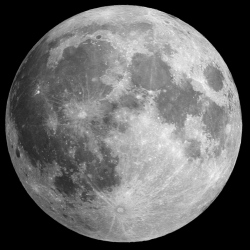
The secret to deep-space exploration could be buried deep within the moon. A University of Central Florida scientist is developing a process that could mine the moon of its ice, which could eventually open the way for rocket-fuel production on the lunar surface.
That would make it more likely that rockets could take off from the moon with enough force to, for the first time, expand a vehicle’s range.
"The cost of spaceflight is primarily driven by the launch of propellants into space," said UCF’s Phil Metzger, who landed a six-month contract with United Launch Alliance to explore the potential. "If we could get those propellants from space, we could cut those costs."
But sending hardware to the moon might not be cost-efficient—especially as reusable launch vehicles such as those used by SpaceX and Blue Origin bring the price of launches down, said Jon Goff, who runs the Broomfield, Colo.-based robotics company Altius Space Machines.
"Once you get stuff launched from the moon, will it still always be cheaper than launching from Earth?" said Goff, whose company has worked with NASA and ULA. "That is an open question."
The benefits of the exploration could reduce the cost of space transportation significantly, ULA Chief Scientist Bernard Kutter said in a news release.
"Procuring propellant derived from the moon may be substantially less expensive than hauling the propellant out of Earth’s deep-gravity well," he said. "This in turn could reduce the cost of space transportation by as much as a factor of five."
The moon mining is driven in part by ULA’s 30-year vision, which foresees 1,000 people living and working in the space between Earth and the moon by 2046. That would require sustainable resources that could support teams near the moon and also provide a rest stop for those who plan to travel or explore deeper into space, Metzger said.
"It would be like a gas station along the way to keep it going," he said. Financial details of ULA’s deal with Metzger were not disclosed.
Efforts to mine the moon’s ice provide a way for ULA to plant its flag in a new sector, hoping to remain competitive with SpaceX, Goff said. The Elon Musk-led company hit a major milestone Tuesday by launching its Falcon Heavy rocket, which employs reusable boosters, on its first test flight from Kennedy Space Center.
"In a world where SpaceX keeps succeeding, the next question should be, ‘How do I compete?’" Goff said. "… This is them trying to copy what SpaceX has done and have an exciting goal and get people excited to work with them," he said.
Metzger’s team is seeking a way to reach ice that scientists say is buried at the moon’s poles. The initial thought is that drills could penetrate the moon, pump heat into it and collect vapor that comes from the ice chunks.
That vapor can then be broken down into hydrogen and oxygen, two elements required in the production of rocket fuel. Using lunar resources could also benefit Earth’s environment.
"We have outgrown our globe and we are putting too much burden on the planet," Metzger said. "We are using up most affordable resources. The ultimate solution is to put the machinery of civilization into space."
